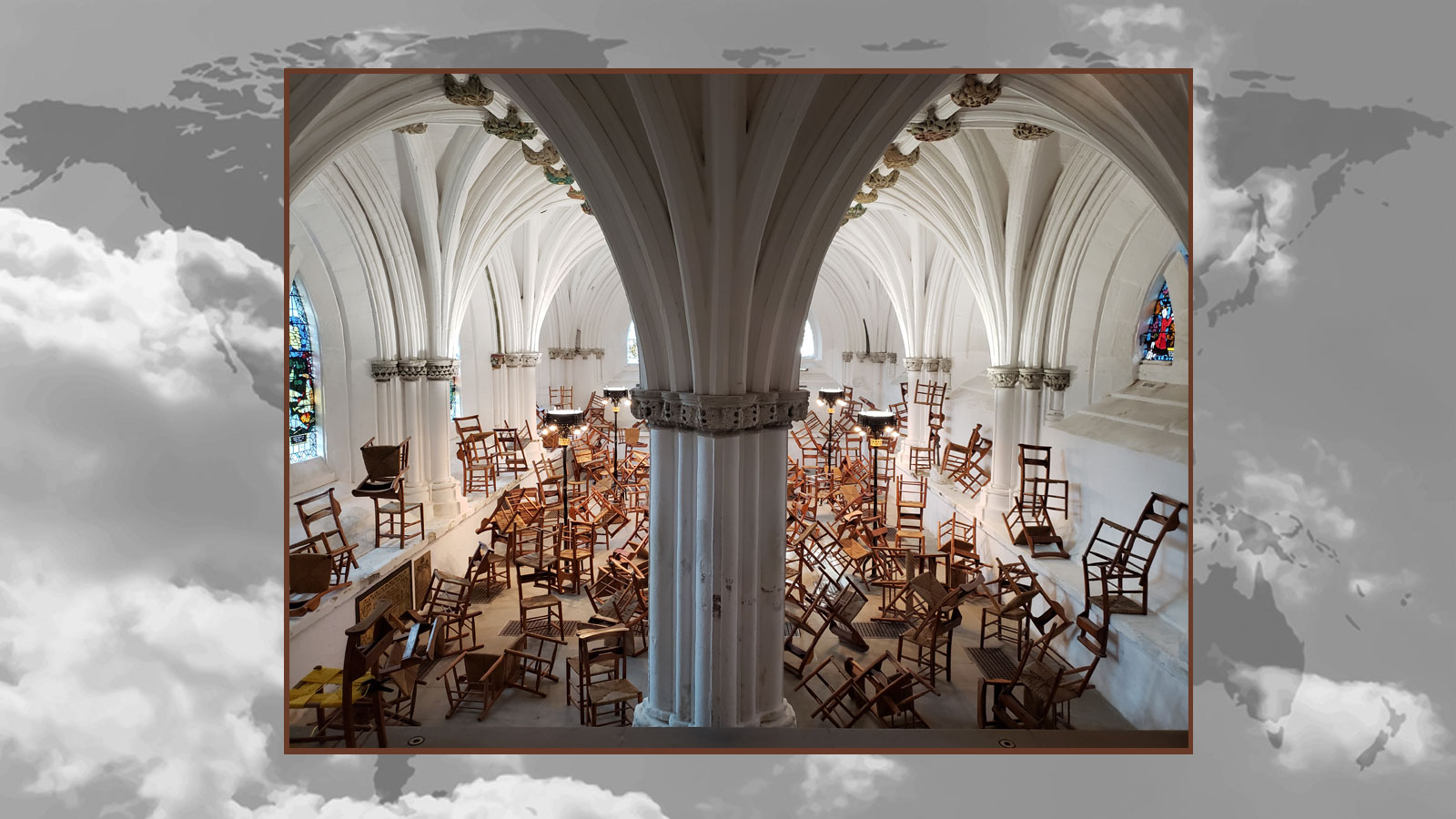GLASGOW, SCOTLAND, COP26 – I went to explore the Glasgow Cathedral November 2, and here is what I learned.
Created by Heidi and Peter Gardner, this temporary art installation, titled “I will learn to sit with you and I will learn to listen”, inspires viewers to consider what it means to have inclusive conversations. This is a timely and personal subject for the artists, as they are residents of Glasgow, the host city to COP26, where more than 30,000 government representatives, community activists, educators, and more will have thousands of conversations on climate science, impacts, and solutions.
When I asked why they chose Glasgow Cathedral as the setting for this art installation, Heidi explained that it was a natural fit. While exploring the Cathedral looking for inspiration for this art piece, they came upon a closed-off room in the church’s depths adorned with bright white walls, a stark contrast to the brown and red bricks that permeate most of the Cathedral’s interior. In the far end of this white room was a stack of one-hundred-year-old chairs, remnants of a time in which this space was used for concerts and weddings. The Gardners’ desire to incorporate sustainability and avoid additional waste with their art encouraged them to use the chairs that were already present in the space.
Placement of chairs points to widespread unequal conversations
The 61 pairs of chairs, 122 in total, are arranged in a delicate balance across the space. They are not glued or tied together, allowing for the eventual change of positions in the exhibition. In each pair of chairs, one chair is balanced in a way that holds the other chair down. In this way, the installation critiques the widespread reality of unequal conversations, drawing parallels to the ways in which some people hold conversations hostage and do not allow others to speak or contribute to decision-making.
It may seem strange to be reading about an array of chairs in a digest about a climate conference. What led me to the basement of an ancient Glaswegian church on a Tuesday morning instead of inside the COP26 venue?
The reality that you may not have seen in the media is that COP26 is deeply exclusionary. Under the guise of safety and COVID-19 protocols, the organizers of COP26 have restricted community access to large parts of the conference experience. This injustice led me to seek out the voices of Glaswegians and other activists in the community, through art exhibitions and local events.
Feelings of being excluded … overlooked
Glasgow is known for its warm hospitality, and Glaswegians were remarkably excited to welcome international travelers. Yet, they were largely overlooked and excluded during COP planning and execution.
So, too, have thousands of activists, representatives, and educators from other parts of the world, especially the Global South.
As a result of vaccine apartheid, visa delays, and exorbitant costs for housing and travel to Glasgow, COP26 is missing many voices that represent the most vulnerable in the climate crisis.
From youth and women, to Indigenous groups and residents of frontline communities, there are too few representatives and too few opportunities to have an official COP platform upon which to express our experiences and demands.
We were told that an in-person COP was necessary due to technological complications seen in their pre-COP trials, in which countries from the Global South faced too many difficulties with lagging Internet connections and botched interpretation services. While I understand the value of an in-person conference, delegates cannot do what we came here to do if COP does not cooperate with us. We are bracing against cold temperatures for an hour and a half to enter the venue. Once inside, we have been denied access to plenary sessions and spaces in which decisions are made. This lack of transparency is dampening the COP process. (As I’m writing this, I have received an email from COP organizers apologizing for “inconveniences associated with accessing the venue of COP26” and encouraging delegates to be supportive and understanding.)
Calls for a more inclusive, more diverse COP
During COP26, the artists will reweave some of the chairs with a bright yellow twine from a local Scottish business. These chairs will then be moved to a different location and face each other, symbolizing a hope for more equitable conversations. This optimistic approach to conversation echoes the demands of activists all over the world calling for a more inclusive COP and a more diverse decision-making process.
Inclusion is a core component of the Action for Climate Empowerment (ACE) framework, which is critical for the Climate Generation: Window into COP26 delegation. Our delegation is in Scotland to amplify the need for civic participation, equity, engagement, and education, and I will do what I can to share that urgent message during this conference.
Inclusion is necessary to achieve the goals of our delegation and of COP26. Without inclusion, the successes of COP will be like Easter eggs: shiny on the outside and hollow on the inside.
Stay tuned for more from the COP26 scene, and follow along as we navigate the politics of running a successful climate conference. I very much hope to be able to report back significant improvements soon.
If you’re interested in learning more about the visual artist duo behind the chair installation, visit gardnerandgardner.co.uk.
Julieta Rodrigo is a certified climate science educator and communicator, and a member of Climate Generation’s Window into COP26 Delegation this November. In her role as Program Manager at The CLEO Institute, she educates students, teachers, and the general public about the climate crisis. Learn more about Julieta and subscribe to follow her experience at COP26.
Reprinted with permission of Climate Generation: A Will Steger Legacy’s Window into COP26 program. Featured inset photo provided courtesy of Climate Generation.
Source link


